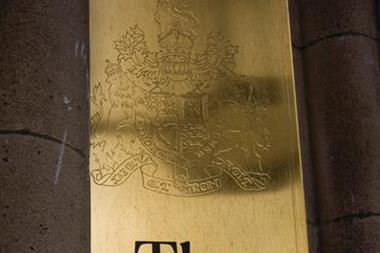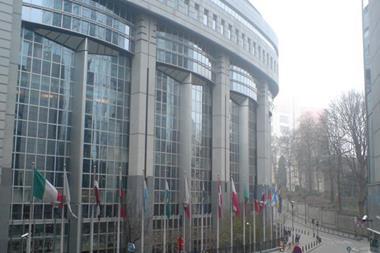Risk management is by no means a new idea. Andrew Leslie, deputy editor, StrategicRISK, looks back at medieval Europe to see how merchants and traders managed their risk
There’s nothing new under the sun. To solve the liquidity problem arising from borrowing short-term and lending long term, Johan Palmstruch, general manager of Sweden’s Stockholm’s Banco, invented Europe’s first bank notes in 1661. They proved to be extremely popular. But because the underlying collateral (copper coinage) fell in value, the bank started to default on its obligations and the Swedish government was forced to take on the debt. Palmstruch was sentenced to loss of his title, loss of his banking privilege, and eternal exile or death. Today’s bankers only risk their jobs or bonuses. Clearly Europe has gone soft!
Interestingly, Palmstruch was actually charged with irresponsible book keeping and control. In other words, lack of proper risk management. By the mid 17th century, risk management was well understood in practice, if not in principle. The professionalisation of risk management may be a modern phenomenon, but merchants and bankers have been managing risk for centuries, and under far more difficult conditions than today.
Many of the risks they had to manage are exactly the same as those which appear on modern risk manager’s ‘top ten’ lists: fraud, supply, politics, credit, data security. Add plague, war, bandits, a ban on usury, and a dearth of mobile phones, and you can see how difficult life could be.
Medieval credit risk
Then, as now, risks were not compartmentalised. For example, the Medici bank, for a time Europe’s wealthiest, had a long-standing risk control in place which forbade lending money to secular rulers – notoriously bad credit risks. Yet England’s King Edward IV managed to borrowed 10,500 pounds sterling, which he proved unable to repay. Other nobles who had borrowed money ended up dead in the Wars of the Roses. The London branch went into liquidation with a massive loss.
A further Medici risk control – the practice of summoning branch managers to Florence to report and to have their books examined – seems to have been relaxed by Francesco Sassetti, general manager of the bank around 1462. He also fatally removed the control on lending to secular rulers in 1471, enabling the local manager of the Bruges branch, Tommaso Portnari, to provide Charles the Bold with a loan of more than twice the branch’s capital. Portnari became a privileged adviser at Charles’ court; the Bruges branch went bust in 1478.
Guilds, cartels and law
In early medieval Europe, there were no laws restricting cartels. In fact, setting up a cartel was a way for the merchant to mitigate a number of obvious risks. The usual cartel was a merchants’ guild set up in the larger towns to control the markets. Charters obtained from local overlords granted exclusive access – eliminating undercutting competitors. They also enabled the merchants to deal with their own brand risk by allowing control over weights and measures, quality of goods and other matters which might drive away custom.
The most successful trading cartel in medieval Europe was probably the Hanseatic League – an association of northern German towns, whose merchants traded in and around the Baltic, negotiating privileges and exclusive access. The power of the Hansa was evident as early as 1358, when the league embargoed trade with Flandres, and rapidly forced concessions in its favour. Barely a decade later, a league of 75 towns raised a fleet against the Danish King Valdemar, and forced both concessions and compensation out of him.
Yet the Hanseatic league seems to have been very careful to have no formal constitution that might make its members collectively liable. When Edward IV of England attempted to confiscate the goods of London Hanseatic merchants in compensation for English ships being taken in the Baltic, the League argued that it had no common council, no seal and no means of enforcing its decisions, so it was not an entity under Roman law. One is put irresistibly in mind of the difficulty of pinning down individual responsibility in corporate manslaughter cases. In medieval Europe, as now, good legal advice was an essential part of risk management.
The ultimate regulator
For the medieval merchant in Europe, the ultimate regulator was God. Given the warnings in the bible about riches being a liability at the judgment seat, it is not surprising to find the wealthy mitigating this very serious risk by endowing chapels with works of art, founding almshouses or commissioning masses to be said for their souls. Much of the glorious religious art of Renaissance Europe is the direct result of risk mitigation efforts. By extending patronage to craftsmen and simultaneously making a clear statement of piety, the wealthy merchant was in the enviable situation of enhancing his reputation in this world, while hoping to hedge some of his risk in the next. Although it can be argued that corporate social responsibility is an idea that first emerged in reaction to the squalor of the industrial revolution, institutions such as Jacob Fugger’s 1516 housing project for the needy of Augsburg (often described as the first social housing project in the world) show that at least some merchants felt the need to put something back into the community in which they lived.
While God’s direct regulation may have been ‘light touch’, the church, as interpreter of God’s will, had a more immediate influence. At one extreme, a merchant who was excommunicated, or worked in a city whose citizens were excommunicated en masse (not uncommon in renaissance Italy) was in deep trouble, since his goods could be confiscated and his contracts rendered invalid. But of greater day-to-day concern was the ban on usury, which made borrowing money difficult – since the lender could not charge interest. Hence the importance of Jewish money-lenders, who were not subject to this ban (and regrettably, easy targets for pogroms, often stirred up by their debtors).
There was a way around this ban however, for it only applied to straightforward credit risk – and not to currency risk. So a merchant could borrow in florins and repay in groats after a stated period of time and at a rate agreed when the contract was signed – with the lender having the possibility of profit from exchange rate fluctuations. Over the years this was to evolve into the letter of credit and eventually the tradable bill of exchange.
Why Antonio was a fool
The plot of Shakespeare’s Merchant of Venice revolves around the fact that Antonio the merchant defaults as guarantor of a loan that Shylock has made to his young friend Bassanio. Antonio defaults when his ships are wrecked on their homeward voyage, and Shylock is able to present his bond for a pound of flesh in lieu of repayment.
But had Antonio managed his risk better, he could have insured against his loss – for the first recognisable contracts for marine insurance were already emerging in northern Italy in the early 14th century. Concepts such as the sharing of losses among partners in a marine venture – no matter whose cargo had to be thrown overboard to save the ship – had an even longer history, but by Shakespeare’s time, it was entirely possible to borrow money against a cargo, with the stipulation that it need not be repaid if the ship was lost (interest on the sum borrowed was naturally high). It took somewhat longer for risk transfer to a third party in exchange for a premium alone to emerge, but the fact remains that Antonio was not a good risk manager, as his breezy overconfidence suggests:
Why, fear not, man; I will not forfeit it:
Within these two months, that's a month before
This bond expires, I do expect return
Of thrice three times the value of this bond.
As an aside, we can note that Shylock also falls prey to one of a modern risk manager’s bugbears – policy wording. His bond stipulates a pound of flesh, but, as Portia argues, does not allow for any blood to be taken from his victim. So his bond is worthless. Had he visited a more astute notary, or had Antonio found a suitable insurance broker on the Rialto, the play might have ended differently.
The rise of the multinational
For Europe’s merchants, from Roman times onwards, spices, especially pepper, were among the most desirable of commodities. Yet their origin was a mystery, for the Arabian traders had the monopoly so well sewn up that rumours of wealthy lands far to the East were all that merchants had to go on.
It was the pursuit of spice that drove the advances in navigation and the perilous voyages now known as the Age of Exploration. It was the Portuguese who first cracked the secret. They were to retain their monopoly for over a century.
But in 1602, the Dutch East India Company (VOC) was founded. The Dutch had rebelled against their Spanish overlords and no longer had access to spice. The only way to get the trade back was through direct competition. Industrial espionage (the search for the navigational guide books known as ‘rutters’) helped to enable Cornelis de Houtman to make the first Dutch voyage to Indonesia. The secret was out; how best to exploit it?
All the usual risks were present, and the Dutch set about mitigating them with extreme efficiency. For a start, the VOC was a cartel – eliminating competition from outsiders. Secondly, in a startling innovation, capital was raised by the issue of tradable stock – and the world’s first stock exchange came into being. The Spanish and Portuguese trade was largely financed and controlled by the crown. The Dutch spread the risk more widely, and the company controlled its own affairs.
A series of instructions to the company’s servants ensured mitigation of operational risk. For example, Portuguese captains were in the habit of selling off deck space to the highest bidder – with consequent losses of top-heavy galleons. The VOC however, issued precise packing instructions for its ships, with finely drawn diagrams of how the cargo was to be stowed.
To eliminate gluts which might follow the return of a fleet, a huge warehouse stored the spices at Amsterdam until market conditions were favourable for their release. And to eliminate local competition in the east, the company cut down rival plantations and transferred or eliminated spice island populations.
The Portuguese were gradually driven out by assault, and way stations – notably Cape Town – were founded. By 1669, the VOC owned 150 merchant ships and 40 warships, had 50,000 employees, and a private army. The dividend on the original investment stood at 40%.
So risk management is not a new idea, and many risks have hardly changed over the centuries. Some have diminished in importance (fewer CEOs seem now to hedge against an unsatisfactory afterlife), and others can now be relieved by insurance. But many remain for today’s risk manager to scratch his head over, just as his medieval equivalent would have done.




















No comments yet